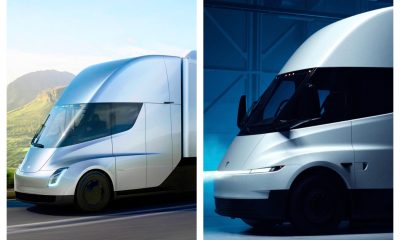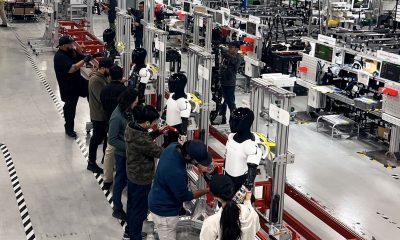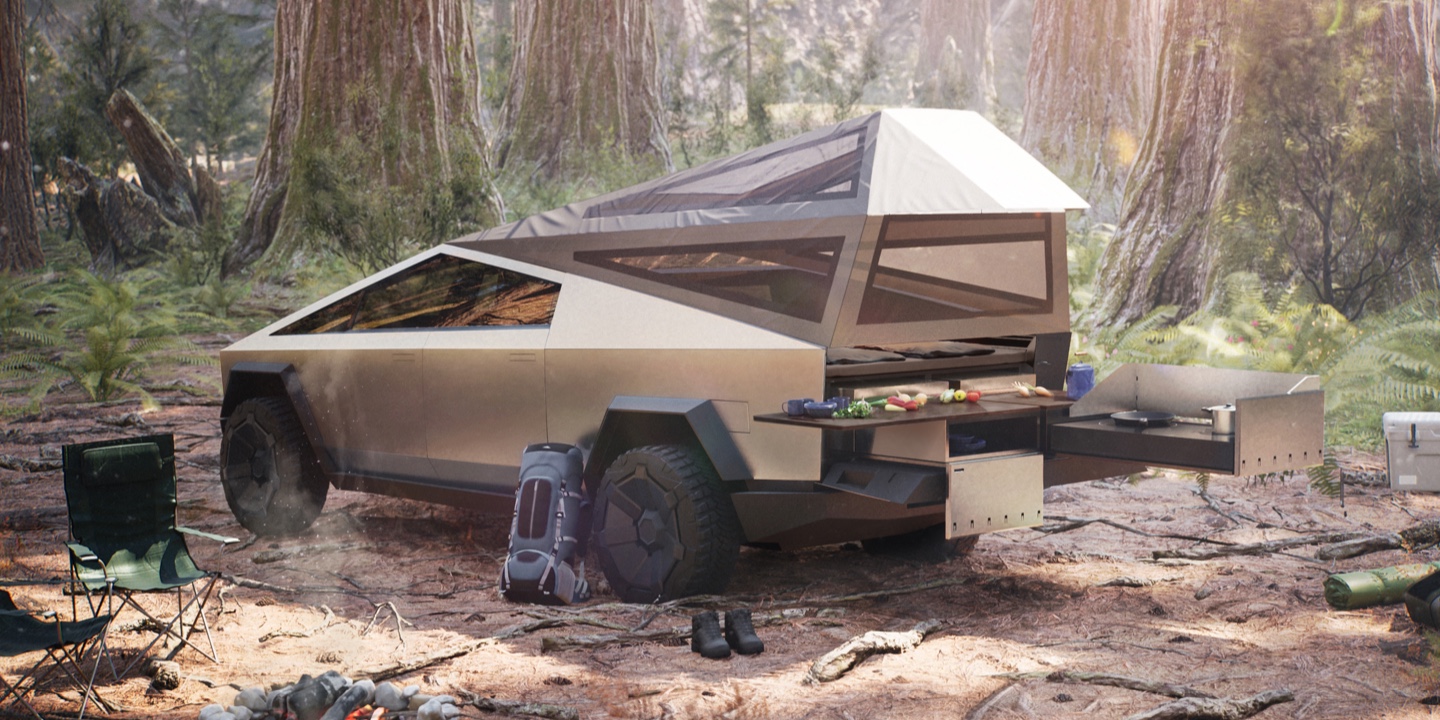
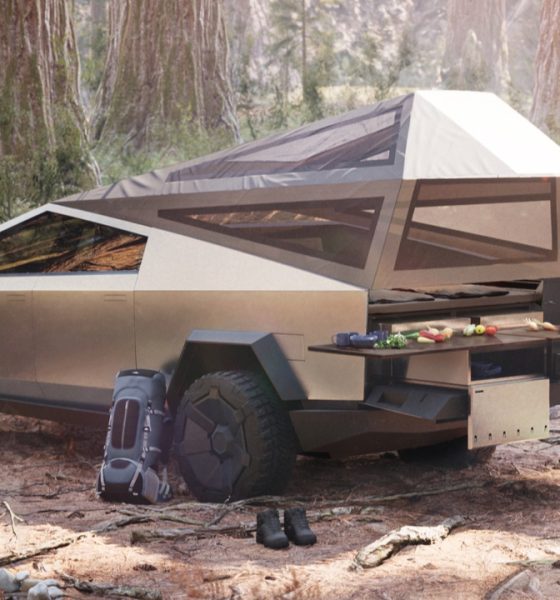
News
Tesla Cybertruck to become New York man’s power source for tiny home
A New York man plans to use the Tesla Cybertruck as a power source for his “tiny home.” Karl Gesslein, a resident of Ithaca placed an order for the Cybertruck the day of the unveiling after realizing that Tesla’s initial attempt at a pickup truck was exactly what he had been looking for since his childhood.
The idea came from his desire to power his new house in a sustainable way, and by using the $50,000 Dual Motor variant of the Tesla Cybertruck, he will no longer need to use portable batteries as his primary power source.
“I watched the Cybertruck reveal and knew I had to have one because it was everything I had always wanted in a car but never been able to have,” Gesslein said. His interest in the Cybertruck came from his childhood dreams of owning cars like the Lotus Espirit and the Delorian DMC-12. But the most appealing thing about the vehicle was its capability to power his house, especially with the help of the “Vault’s” optional solar panel cover.
Currently, Gasslein and his wife live in an off-the-grid house that they have called home for six years. The house utilizes a homemade battery pack, but he is looking for another option as only 1 kWh of the 1.25 kWh system is usable. The Cybertruck, by his estimation, would power his home for 240 straight days, along with some help from solar panels. “That is long enough to get through a pretty harsh nuclear winter with some time to spare,” he says in a blog post he wrote about his idea.
One thing that Gesslein has noted is that the Cybertruck would fight power outages and scheduled blackouts, especially if the vehicle was hooked up to an on-the-grid circuit breaker. Blackouts and power outages are a relevant issue, especially to those who live in California’s San Francisco Bay Area, who were negatively impacted by them earlier this year.
Pacific Gas and Electric (PG&E), a power supplier for many Bay Area homes, conducted mandatory scheduled blackouts to lower the possibility of forest fires caused by their powerlines during California’s windy and dry Autumn months. In response to the blackouts, Tesla offered its solar solutions for a reduced cost, a strategy that would assist homeowners in avoiding blackouts and carbon emissions altogether.
Tesla’s Cybertruck is a versatile machine. Its triple-motor setup offers the highest towing capacity on the market with a 14,000+ lb rating, a stainless steel design that will not bend or dent, a solar panel vault cover capable of charging the vehicle while it is sitting in sunlight, and a charging port for the electric ATV Tesla unveiled at the same event.
But now, the truck will have a new use: powering a future owner’s tiny home. The Cybertruck is a safe and sustainable option for those who are looking for an alternative way to power their homes. While it will take some creativity and some experience with electric, it is definitely possible. “The Cybertruck is the best deal to be found for electric backup power that won’t accidentally burn your house to the ground or kill you in your sleep. Hands down,” Gesslein said.
The Cybertruck begins production in late-2021 and has accumulated over a quarter-of-a-million pre-orders according to CEO Elon Musk. The truck will be available in three trims, a Single, Dual, and Tri-Motor, all offering different power and performance ratings. The Single Motor base model will cost $39,900, the Dual Motor $49,990, and the Tri-Motor variant that will offer a 2.9 second 0-60 MPH acceleration rate will be available for $69,900.
You can watch Karl Gesslein’s video on the idea to utilize his Cybertruck to run his tiny home below.
News
Tesla shares rare peek at Semi factory’s interior
The new video of the Tesla Semi factory was posted by the official Tesla account on X.
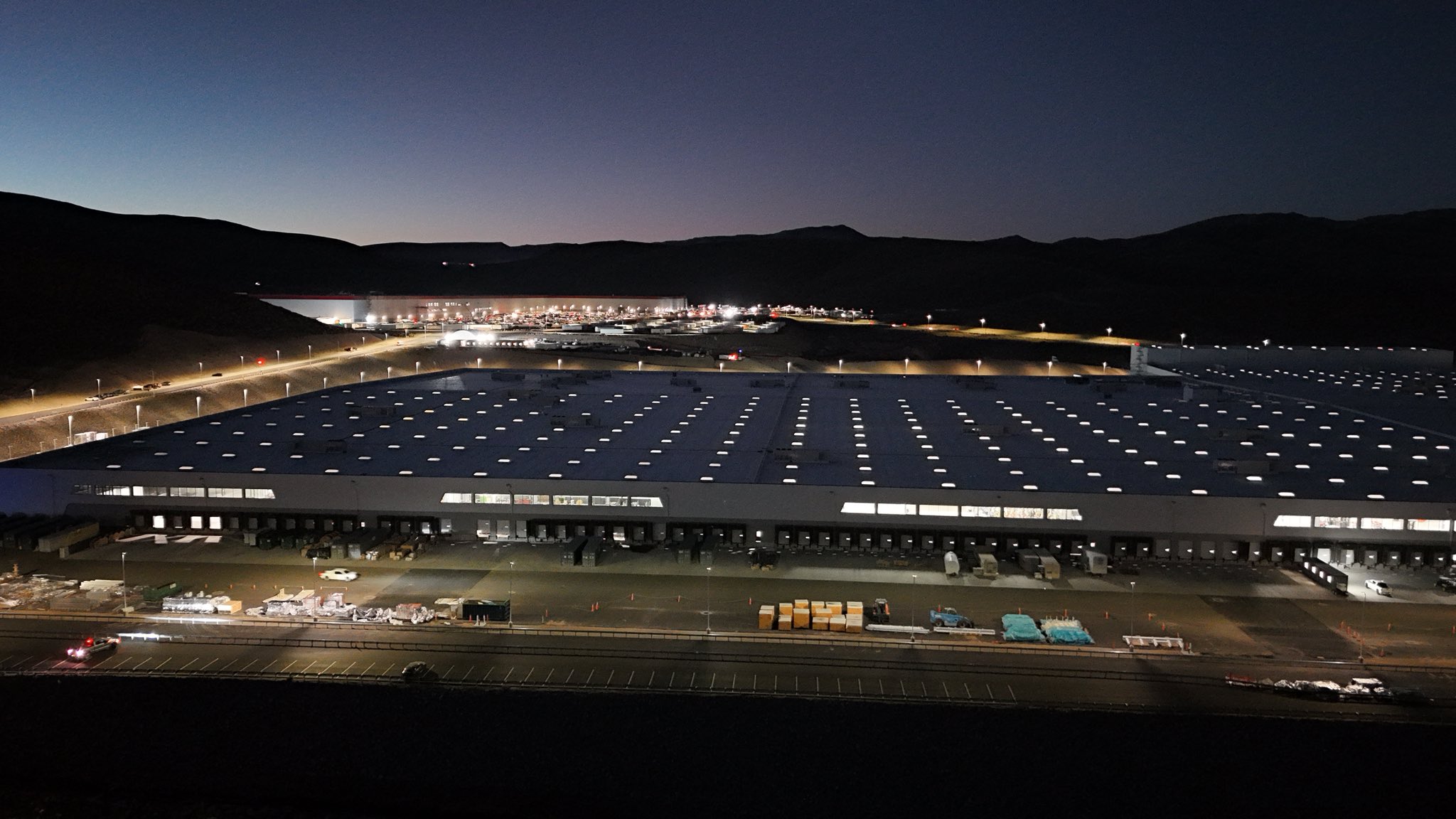
Tesla has shared a rare peek inside the factory of the Tesla Semi, which is expected to start production next year. Based on the video, it appears that work in the facility’s interior is ongoing, just as hinted at by drone flyers of the site.
Tesla Semi factory
The new video of the Tesla Semi factory, which is located close to Giga Nevada, was posted by the official Tesla account on X. While the video was short at less than 30 seconds long, it did show several parts of the factory’s interior, from its gigantic machines to its expansive space. The company also showed some initial production units of the Semi operating around the site.
Elon Musk shared a quick update on the Tesla Semi’s production at the 2025 Annual Shareholder Meeting. While addressing the company’s shareholders, Musk confirmed that production of the Semi is on track for 2026.
“Starting next year, we (will) manufacture the Tesla Semi. So this, we already have a lot of prototype Tesla Semis in operation. PepsiCo and other companies have been using the Tesla Semi for quite some time. But we will start volume production at our Northern Nevada factory in 2026,” Musk said.
Tesla Semi redesign
Apart from Elon Musk’s confirmation that the Semi will indeed enter production next year, Tesla also showed an image of the Class 8 all-electric truck’s overall look. Based on a slide that was shown during Musk’s presentation, it appears that the Semi has undergone a pretty major redesign. The redesigned Semi features updated design cues that align with the company’s current lineup.
Immediately noticeable from the Semi’s updated design is its front end, which now feature headlights that resemble the style of the Cybertruck, Cybercab, and the new Model Y. Several other changes appear designed to improve aerodynamics, with Tesla now stating that the Semi has an efficiency of 1.7 kWh per mile. Side cameras, likely for FSD, are also quite prominent on the redesigned Semi.
Elon Musk
Tesla says texting and driving capability is coming ‘in a month or two’
“In the next month or two, we’re going to look at the safety statistics, but we’re going to allow you to text and drive, essentially.”

Tesla CEO Elon Musk said that within the next month or two, the company will be able to open the ability for people to text and drive because its Full Self-Driving suite will be robust enough to allow drivers to take their attention away from the road.
In its current state, Tesla Full Self-Driving is a supervised driver assistance suite that requires the vehicle operator to maintain control of the vehicle and pay attention to the road surroundings.
However, the company has been aiming to release a fully autonomous version of the Full Self-Driving suite for years, teasing its future potential and aiming to release a Level 5 suite as soon as possible.
CEO Elon Musk believes the company is on the cusp of something drastic, according to what he said at yesterday’s Annual Shareholder Meeting.
One thing Musk hinted at was that the company should be able to allow those sitting in the driver’s seat of their cars to text and drive “in the next month or two,” as long as the statistics look good.
He said:
“In the next month or two, we’re going to look at the safety statistics, but we’re going to allow you to text and drive, essentially.”
The company recently transitioned to its v14 Full Self-Driving suite, which is its most robust to date, and recently expanded to Cybertruck, completing its rollout across the vehicle lineup.
Currently, Tesla is running v14.1.5, and when major improvements are made, that second number will increase, meaning v14.2 will be the next substantial improvement.
Musk said that v14.3 will be when you can “pretty much fall asleep and wake up at your destination.”
🚨🚨 Elon Musk says Tesla Full Self-Driving v14.3 will be when you can “pretty much fall asleep and wake up at your destination.”
We are on v14.1 currently 👀 pic.twitter.com/KMkWh5Qa7T
— TESLARATI (@Teslarati) November 6, 2025
We’ve heard a considerable amount of similar statements in the past, and Tesla owners have been conditioned to take some of these timeframes with autonomous driving with a grain of salt.
However, with the upgrades in FSD over the past few months, especially with the rollout of Robotaxi in Austin, which does not utilize anyone in the driver’s seat for local roads, it does not seem as if autonomy is that far off for Tesla.
News
Tesla Semi undergoes major redesign as dedicated factory preps for deliveries
The Semi has been one of the most anticipated products in the Tesla lineup due to the disruption it could cause in the trucking industry.

Tesla put its all-electric Semi truck through quite a major redesign as its dedicated factory for the vehicle is preparing for initial deliveries to the public starting next year.
The Semi has been one of the most anticipated products in the Tesla lineup due to the disruption it could cause in the trucking industry.
It has already been in numerous pilot programs for some pretty large companies over the past couple of years, PepsiCo. being one of them, and it is moving toward first deliveries to other companies sometime in 2026.
Yesterday at the 2025 Annual Shareholder Meeting, Tesla unveiled its new Semi design, which underwent a pretty significant facelift to match the aesthetic and vibe of the other vehicles in the company’s lineup.
Additionally, Tesla announced some other improvements, including changes to efficiency, and some other changes that we did not get details on yet.
The first change was to the design of the Semi, as Tesla adopted its blade-like light bar for the Class 8 truck, similar to the one that is used on the new Model Y and the Cybertruck:

There also appear to be a handful of design changes that help with aerodynamics, as its efficiency has increased to 1.7 kWh per mile.
Tesla also said it has an increased payload capability, which will help companies to haul more goods per trip.
All of these changes come as the company’s Semi Factory, which is located on the same property as its Gigafactory in Reno, Nevada, is just finishing up. In late October, it was shown that the Semi facility is nearly complete, based on recent drone imagery from factory observer HinrichsZane on X:
The factory will be capable of producing about 50,000 Tesla Semi units annually when it is completely ramped. The company has major plans to help get the Semi in more fleets across the United States.
Other entities are also working to develop a charging corridor for electric Class 8 trucks. The State of California was awarded $102 million to develop a charging corridor that spans from Washington to Southern California.
Another corridor is being developed that spans from Southern California to Texas, and 49 applicants won $636 million from the Department of Transportation for it.
Tesla requested funding for it, but was denied.
The Semi has been a staple in several companies’ fleets over the past few years, most notably that of Frito-Lay and PepsiCo., who have reported positive experiences thus far.
Musk said last year that the Semi had “ridiculous demand.”
-

 News1 week ago
News1 week agoTesla Cybercab spotted testing on public roads for the first time
-

 Elon Musk7 days ago
Elon Musk7 days agoNeuralink’s first patient could receive an upgrade: Elon Musk
-
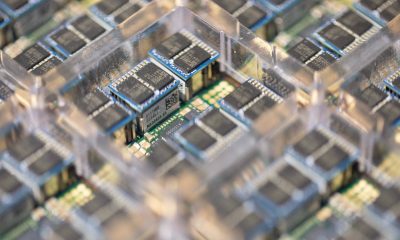
 Elon Musk5 days ago
Elon Musk5 days agoElon Musk subtly confirms one of Tesla AI8’s uses, and it’s literally out of this world
-
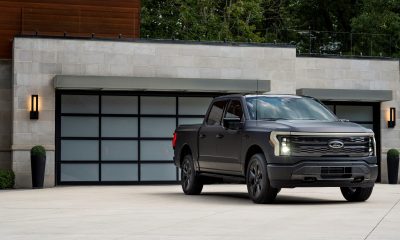
 News19 hours ago
News19 hours agoFord reportedly considers cancelling F-150 Lightning: ‘The demand is just not there’
-
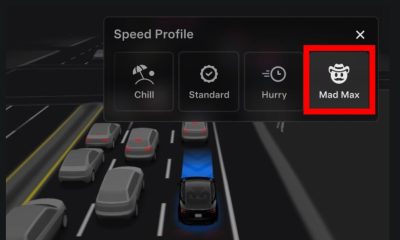
 News2 weeks ago
News2 weeks agoTesla ‘Mad Max’ gets its first bit of regulatory attention
-
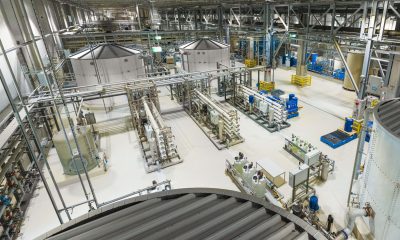
 News3 days ago
News3 days agoTesla Giga Berlin hits a sustainability milestone that’s so impressive, it sounds fake
-

 News4 days ago
News4 days agoTesla Cybertruck explosion probe ends with federal involvement and new questions
-
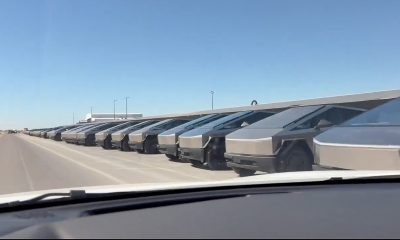
 Cybertruck4 days ago
Cybertruck4 days agoTesla Cybertruck fleet takes over at SpaceX’s Starbase






